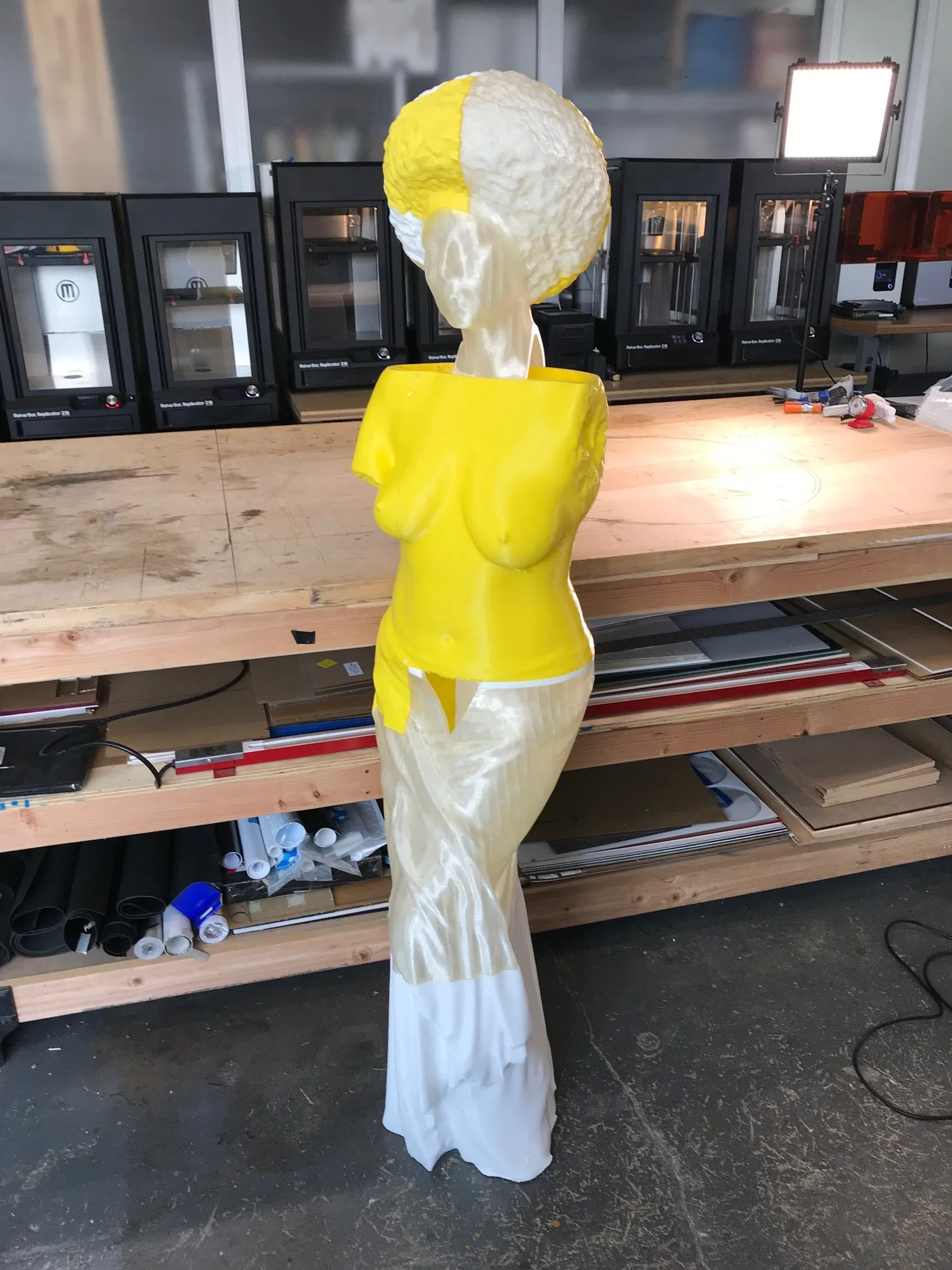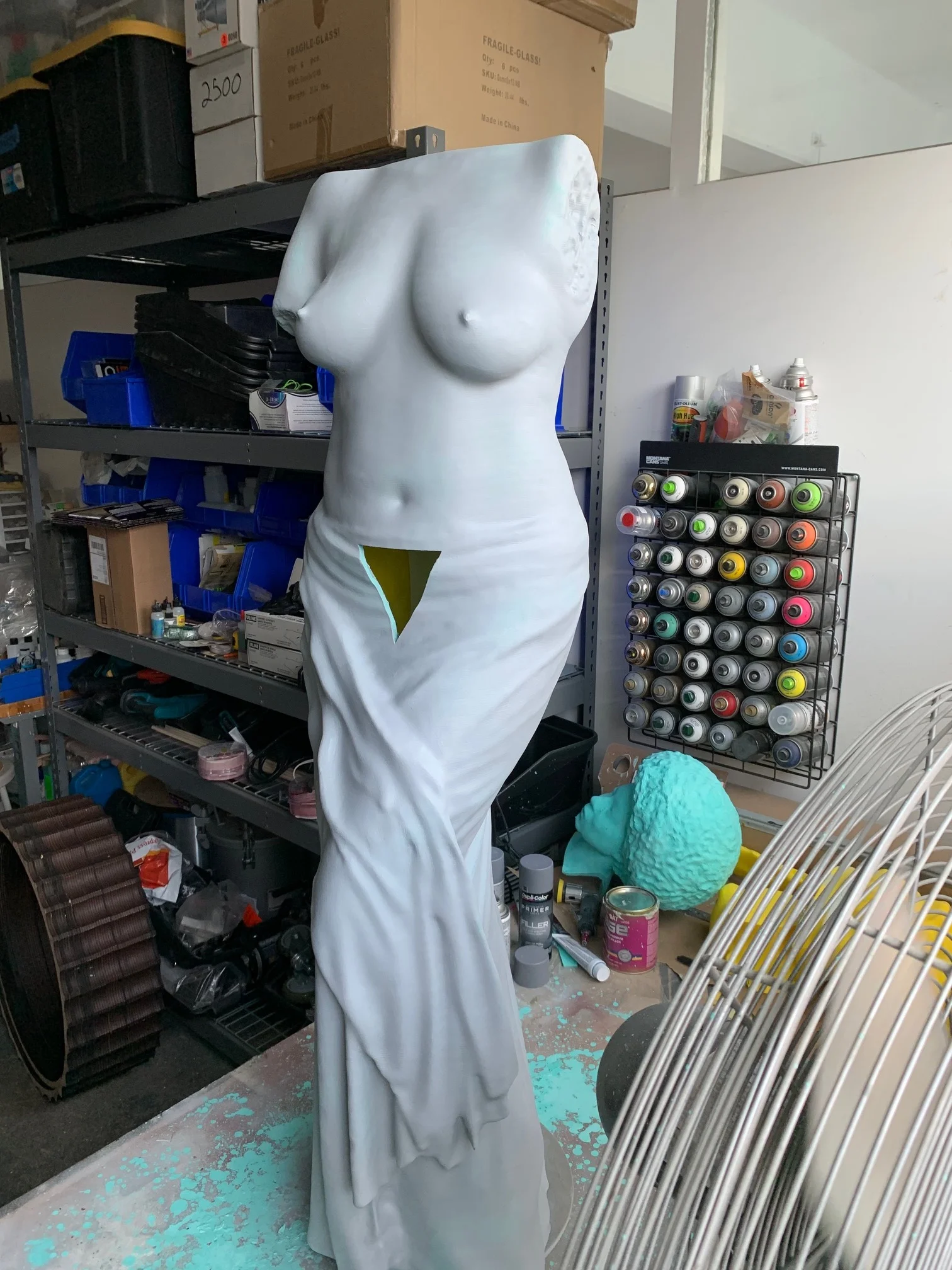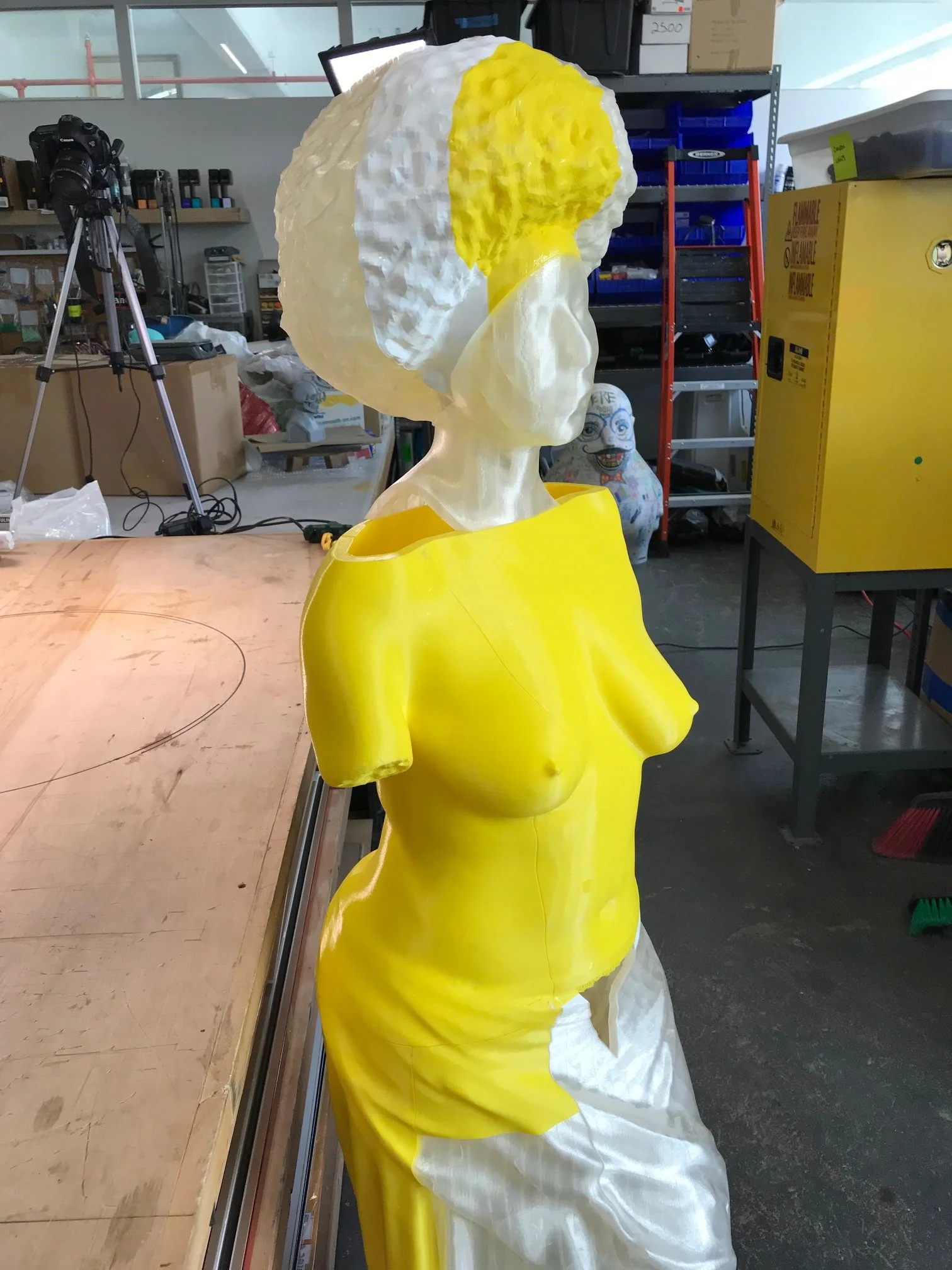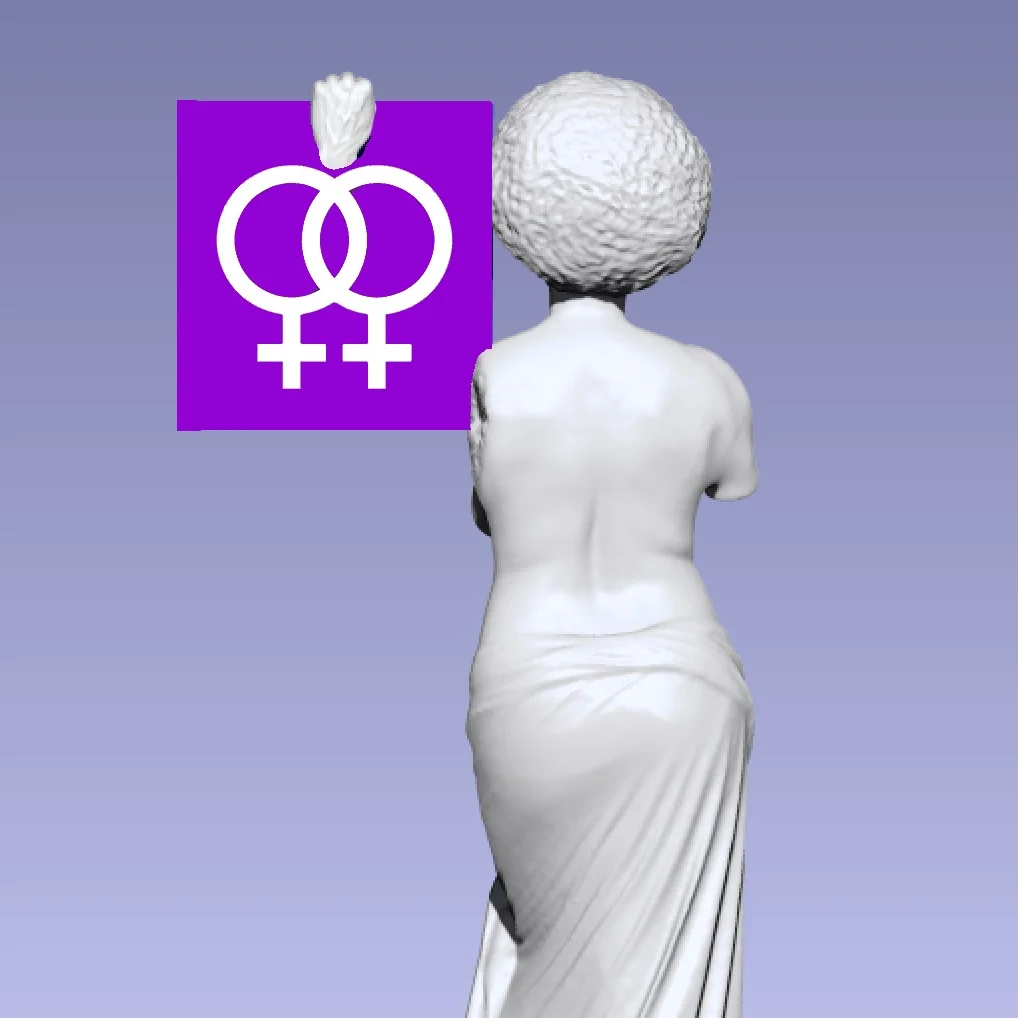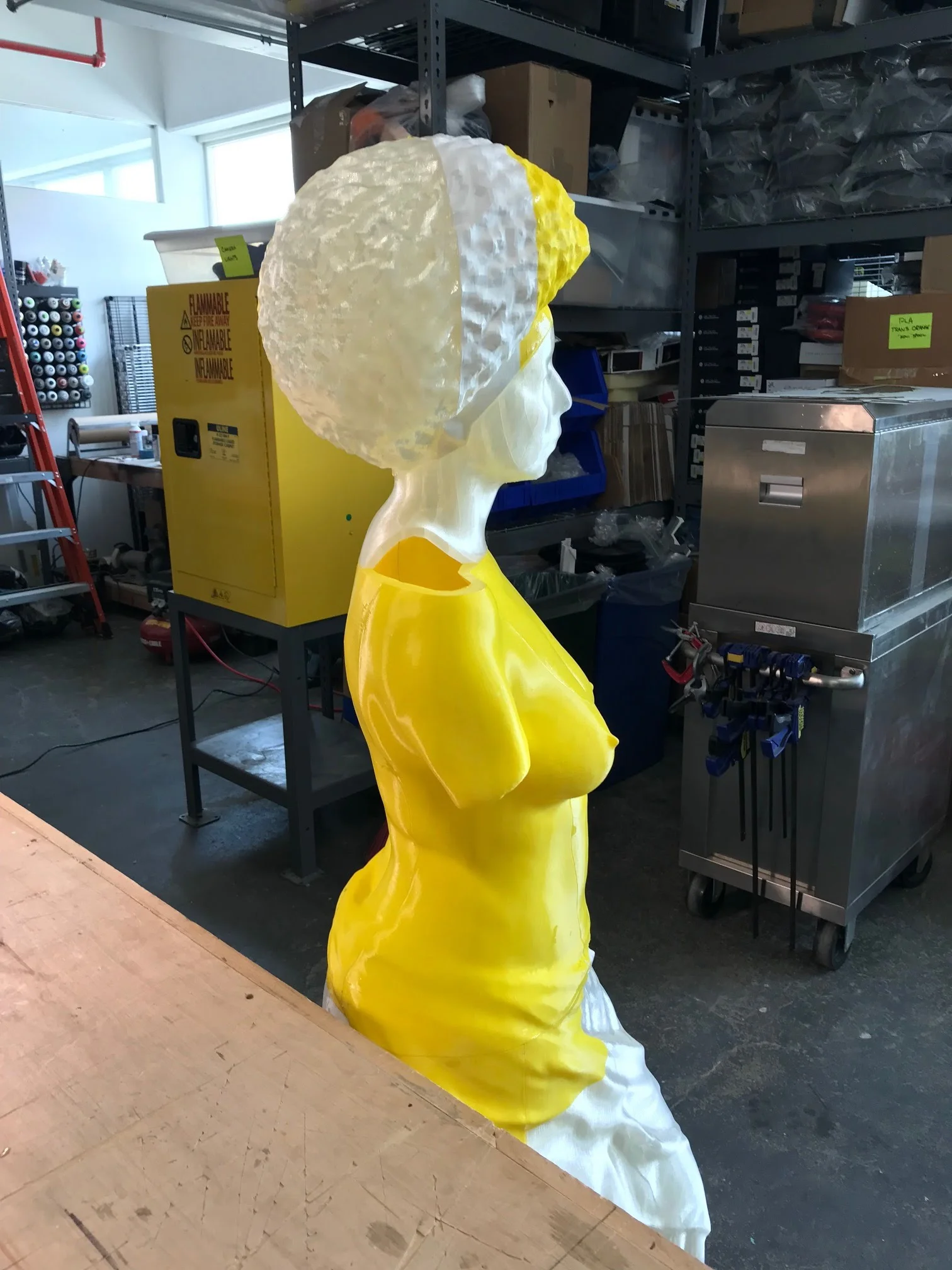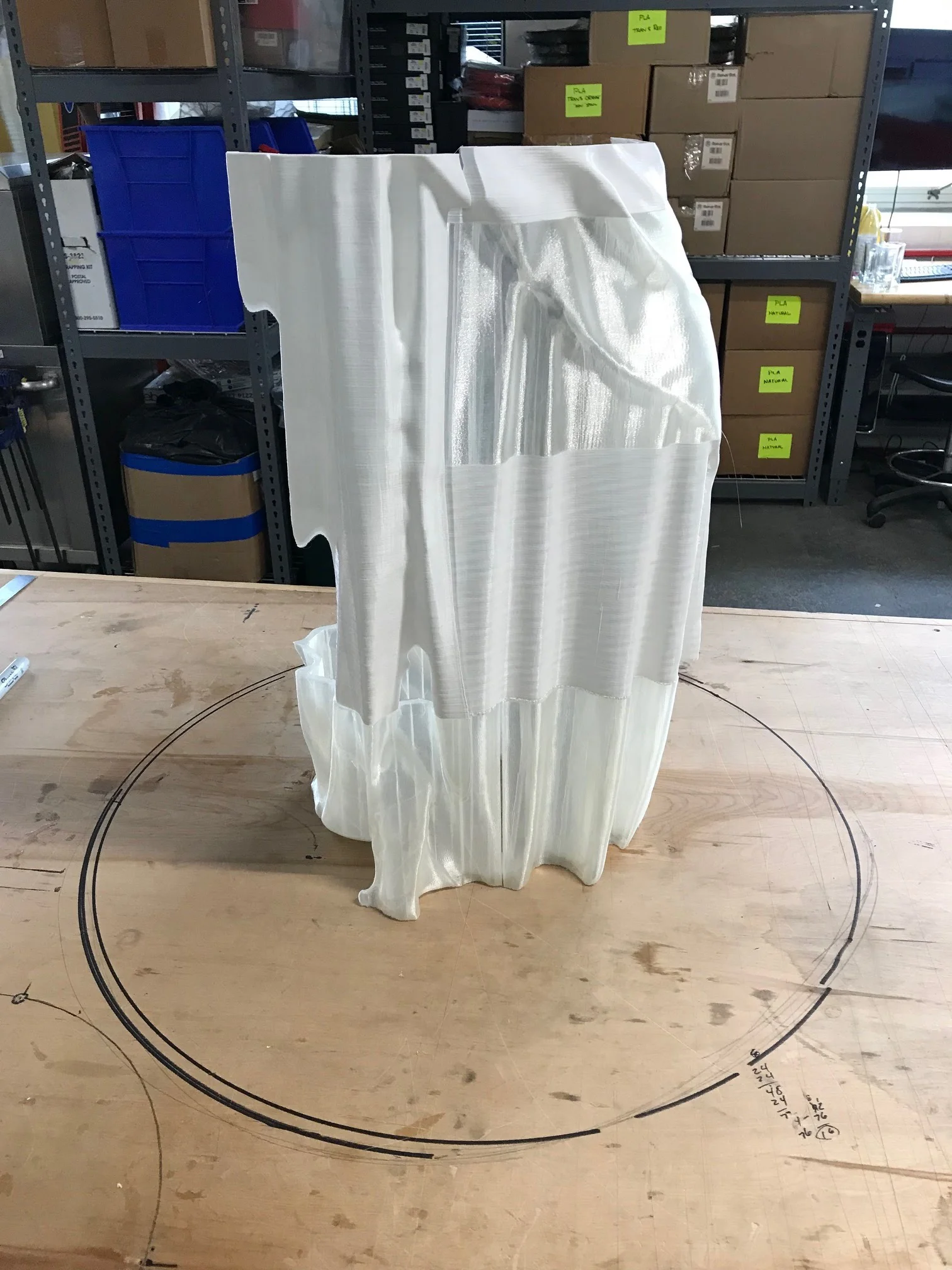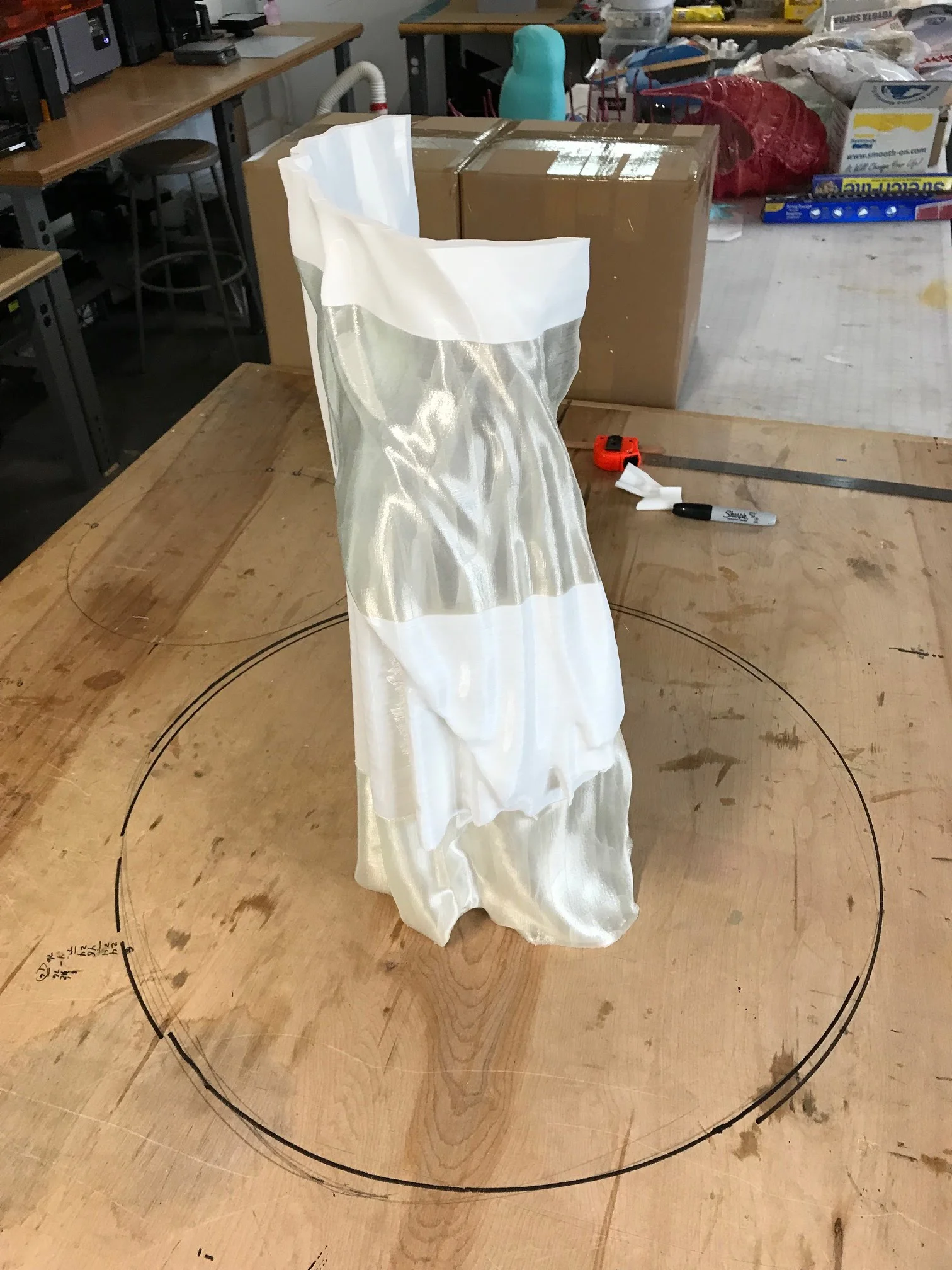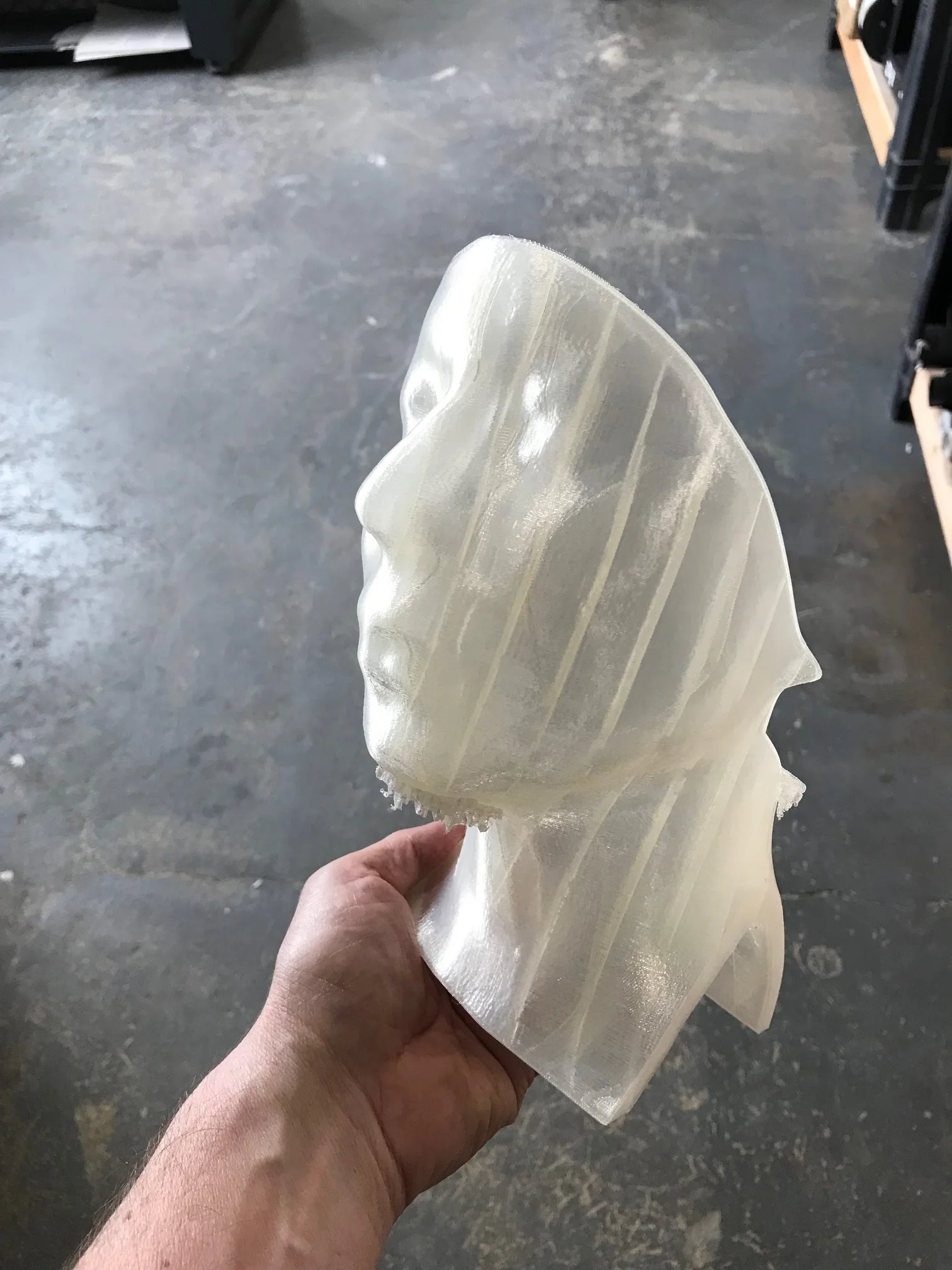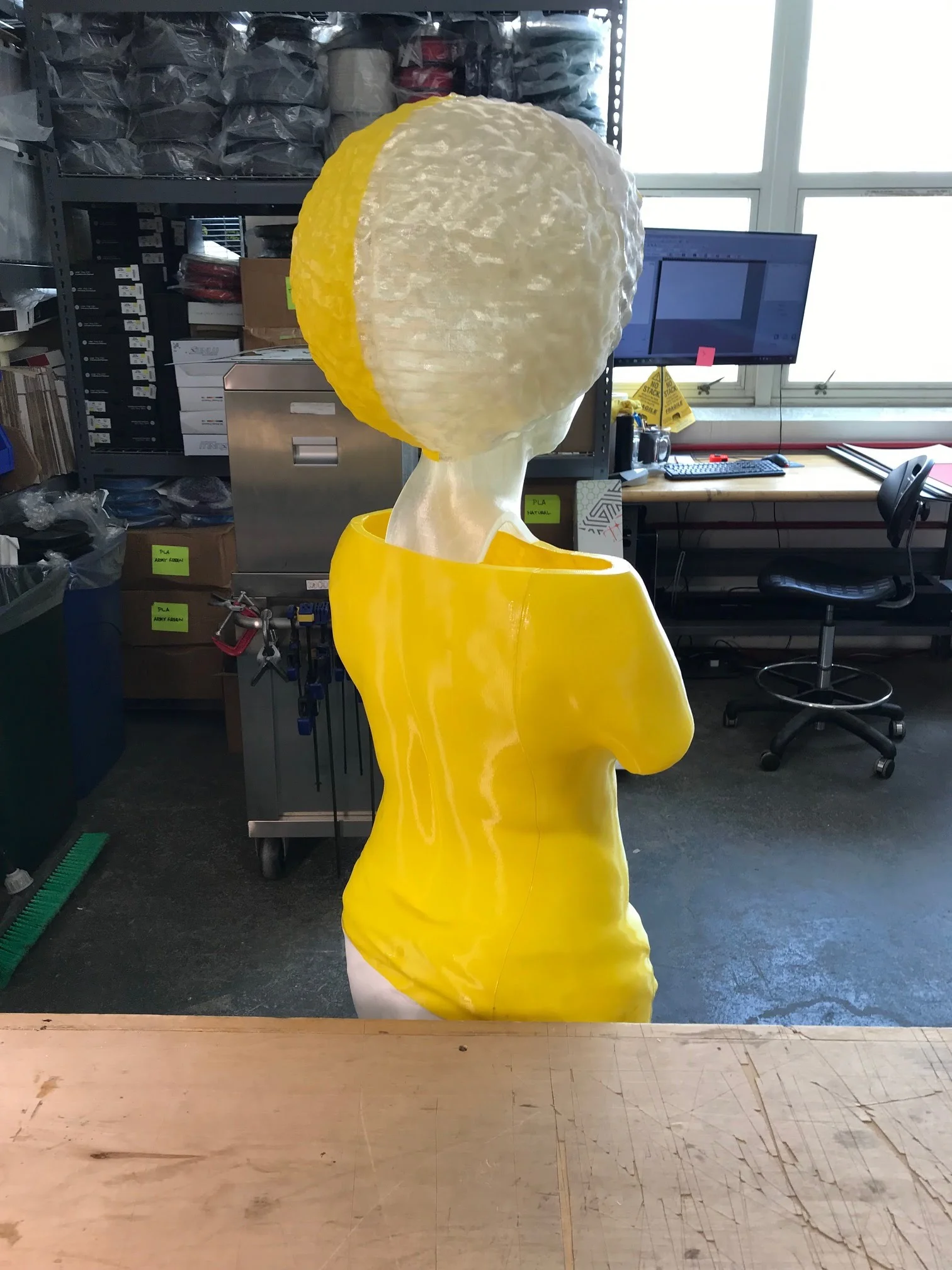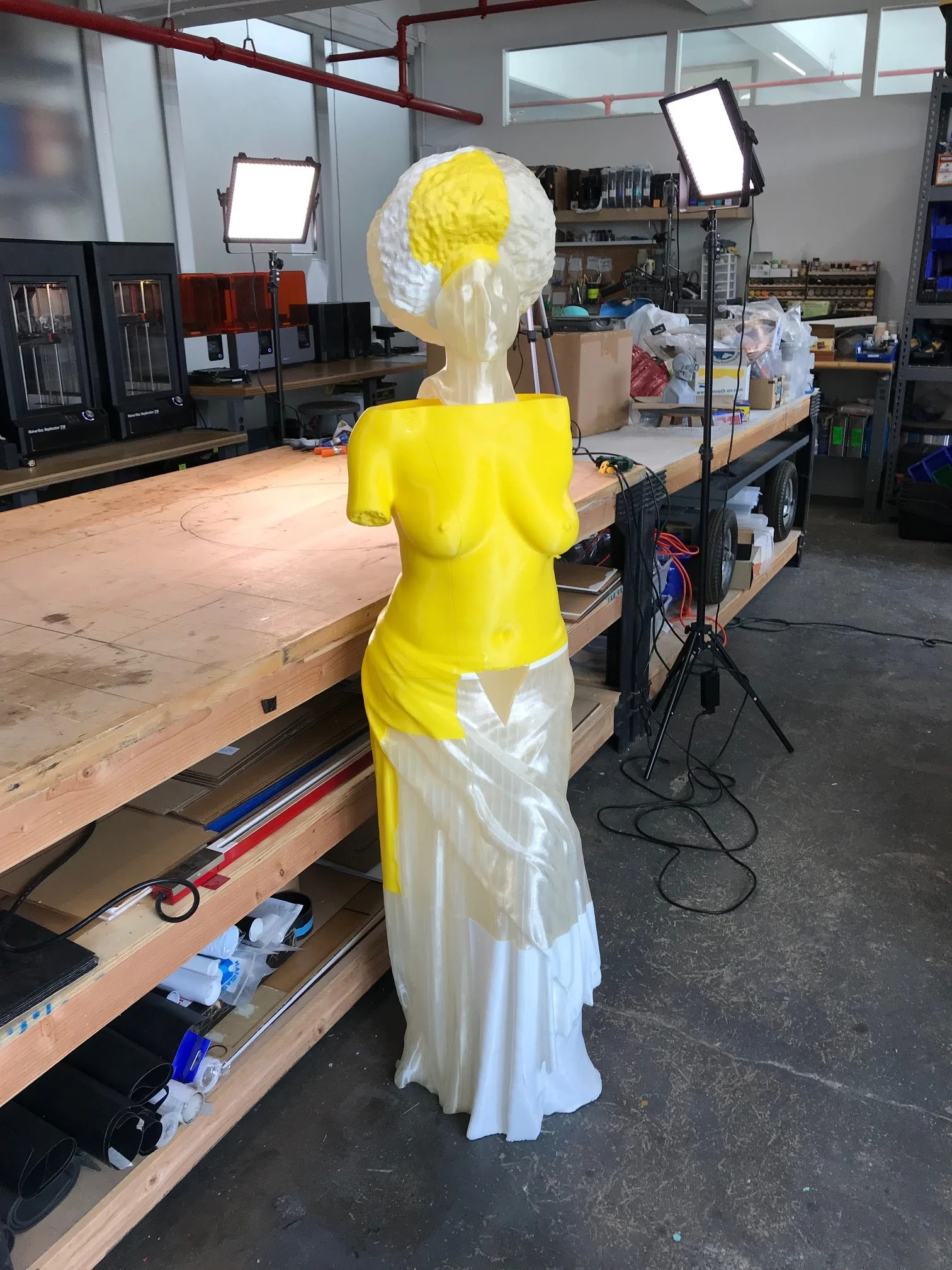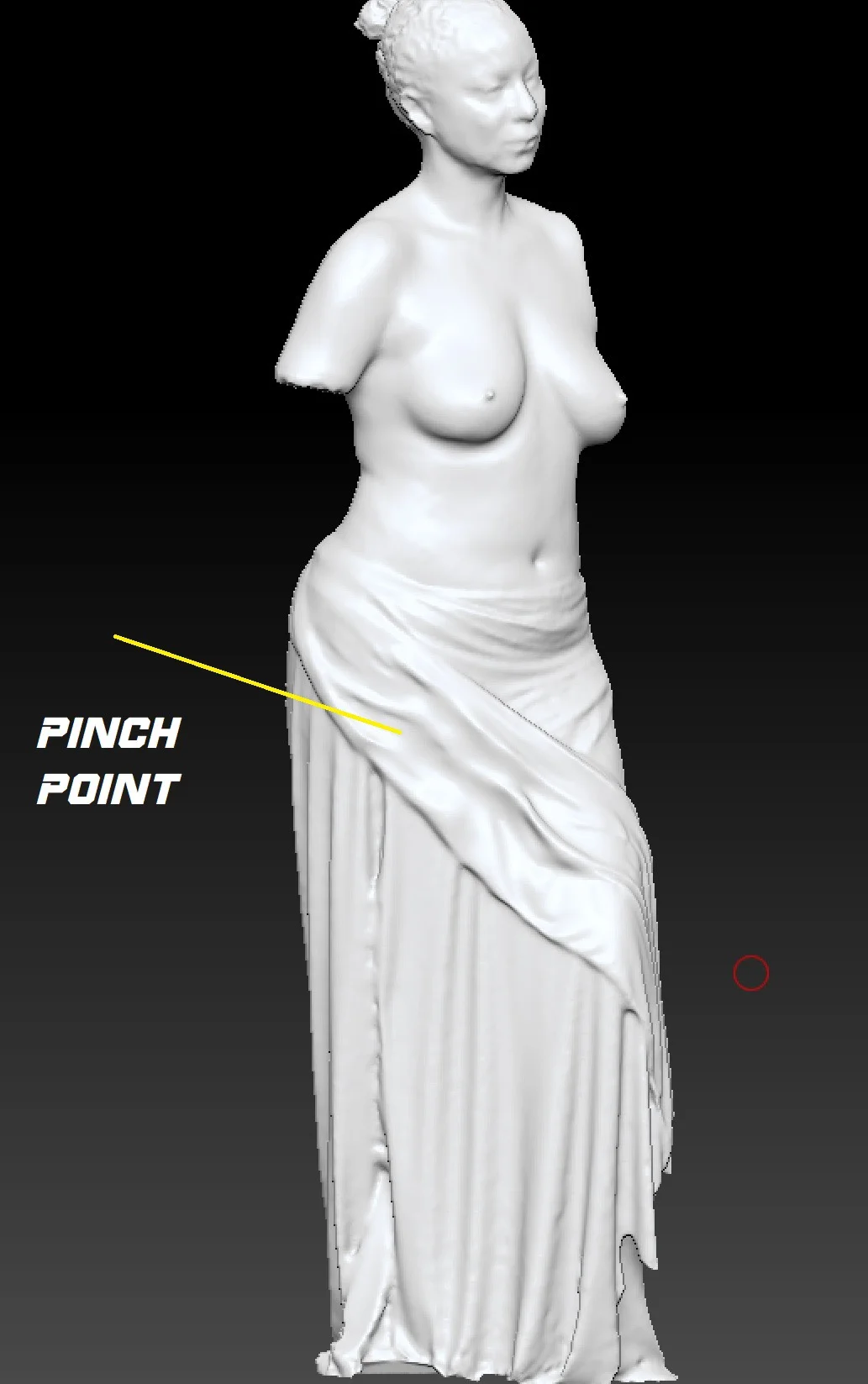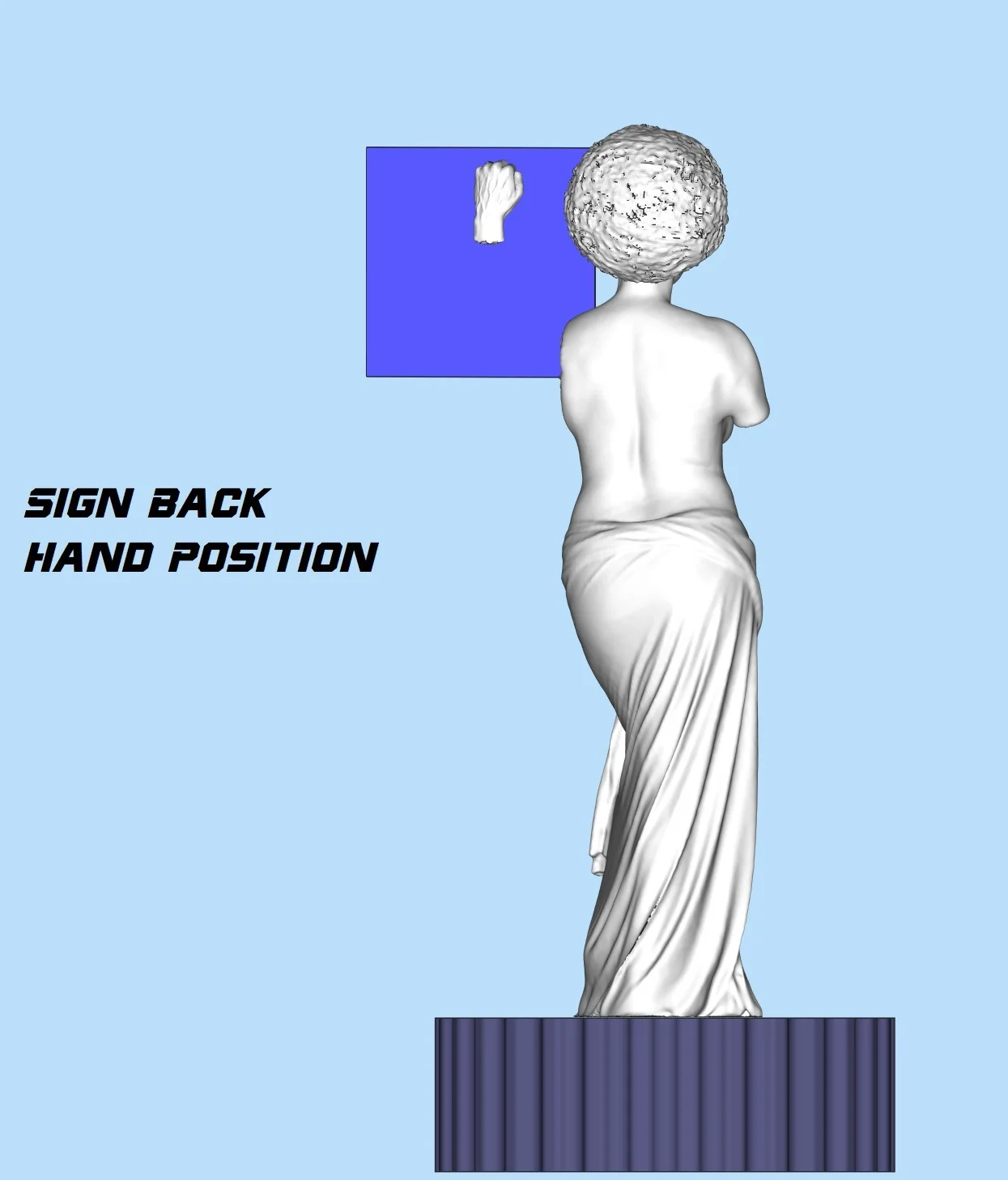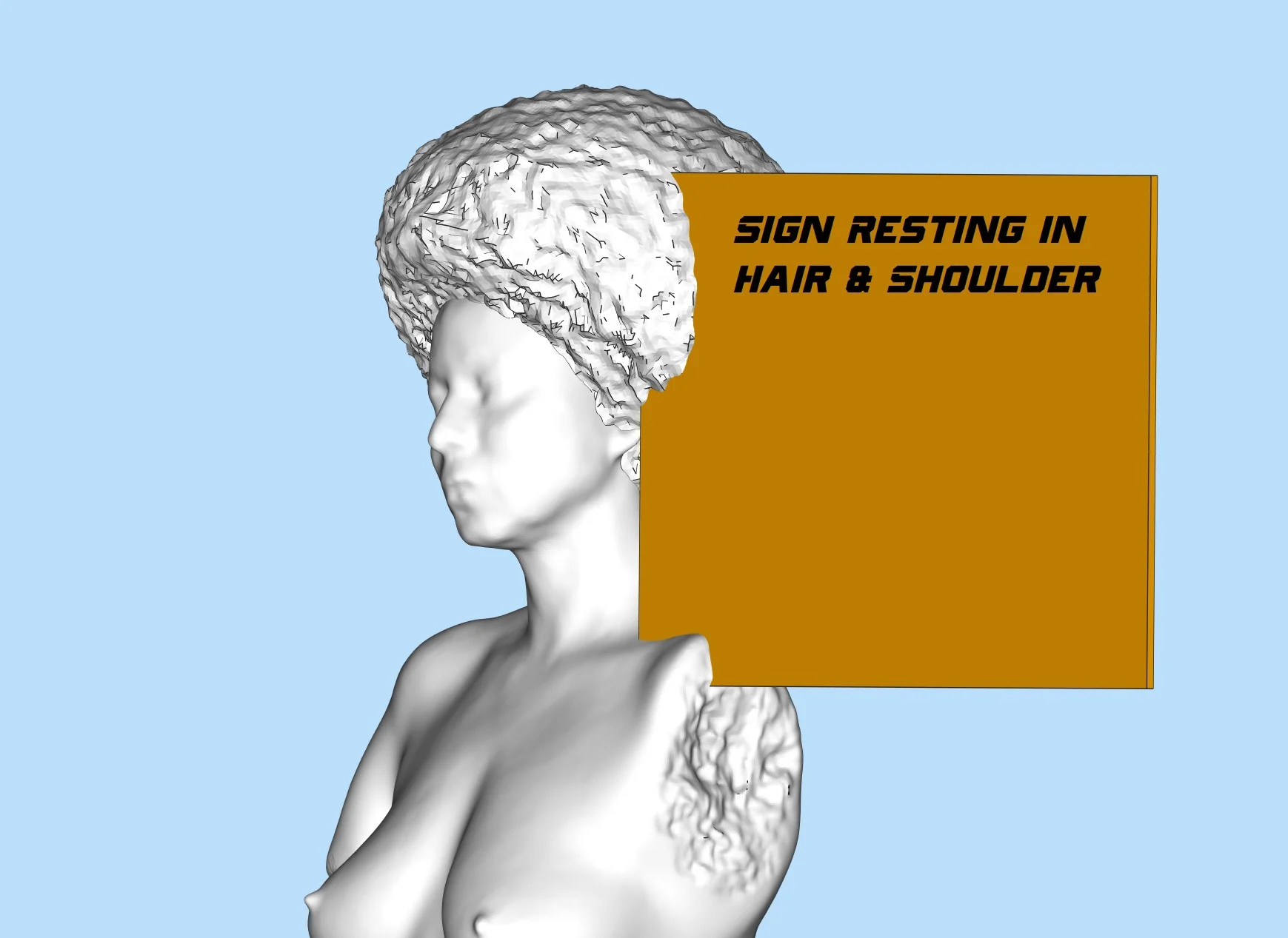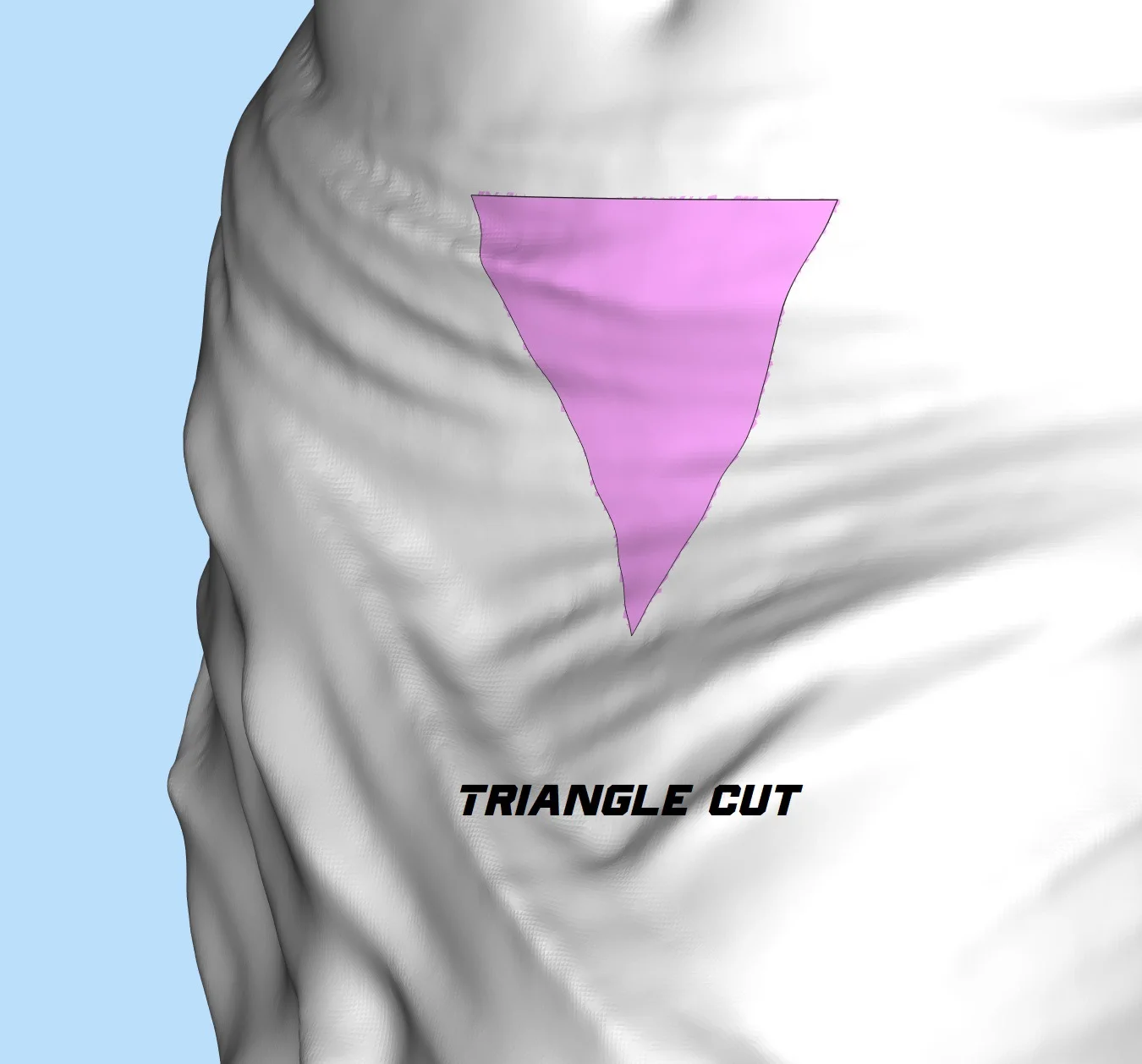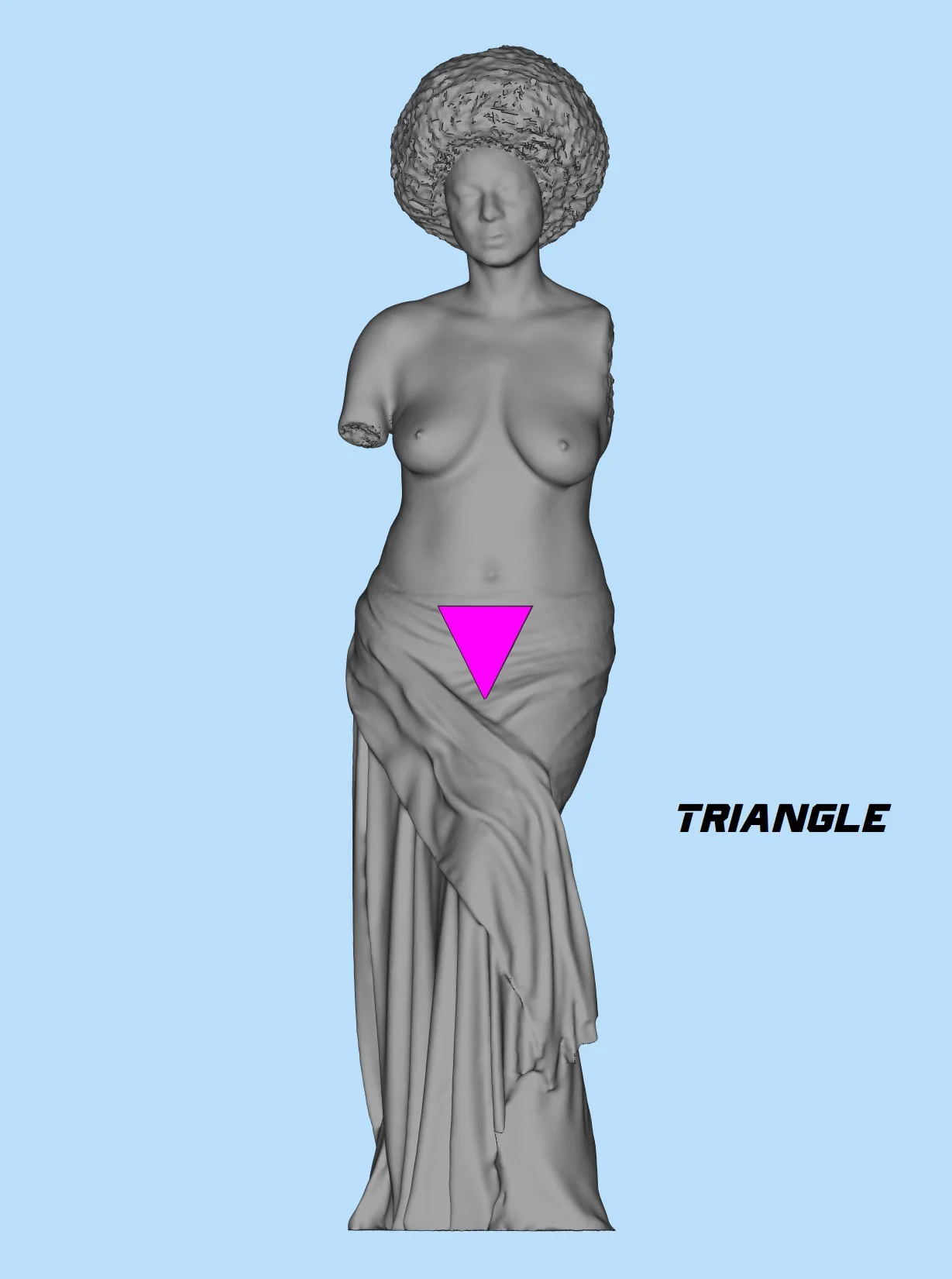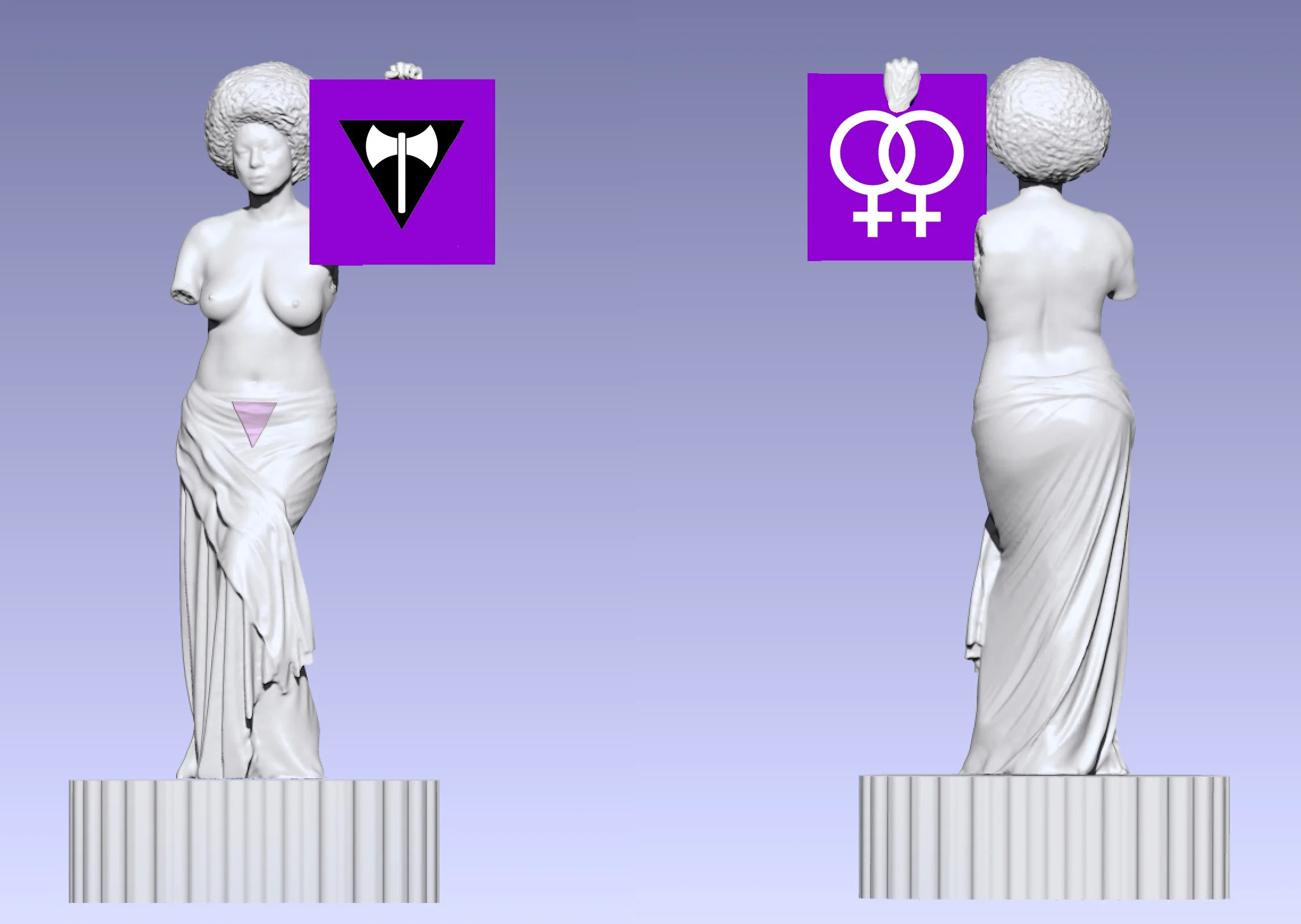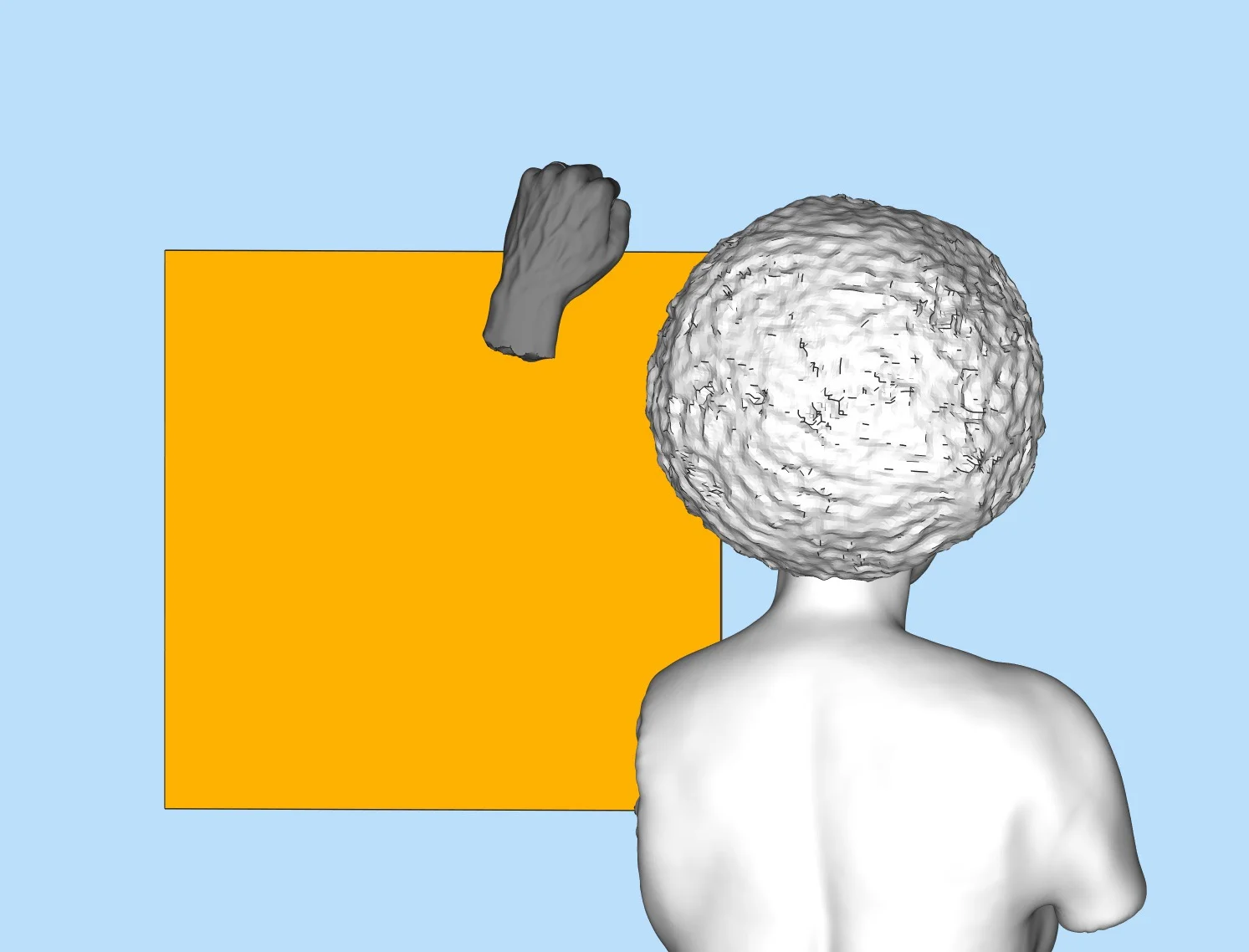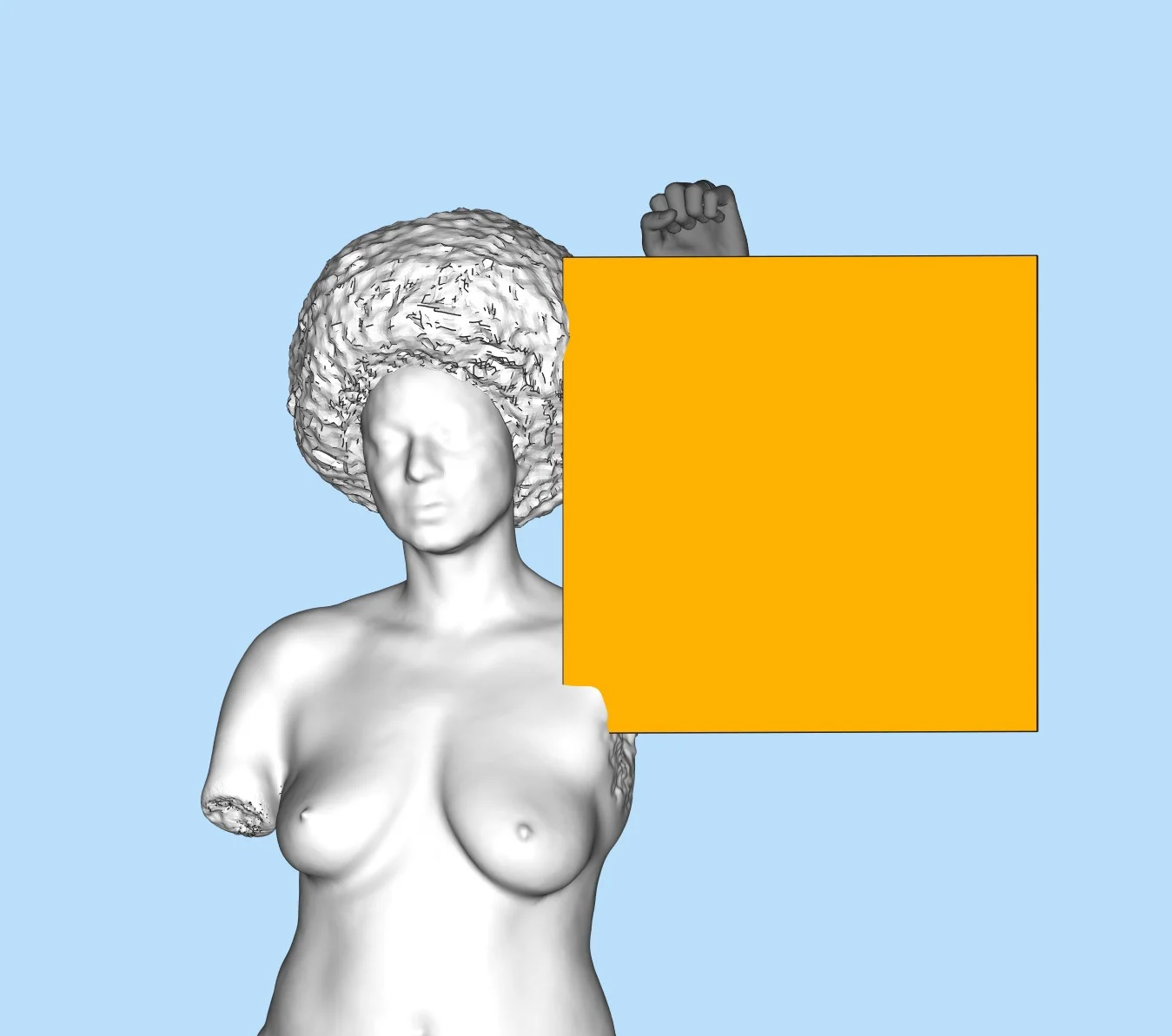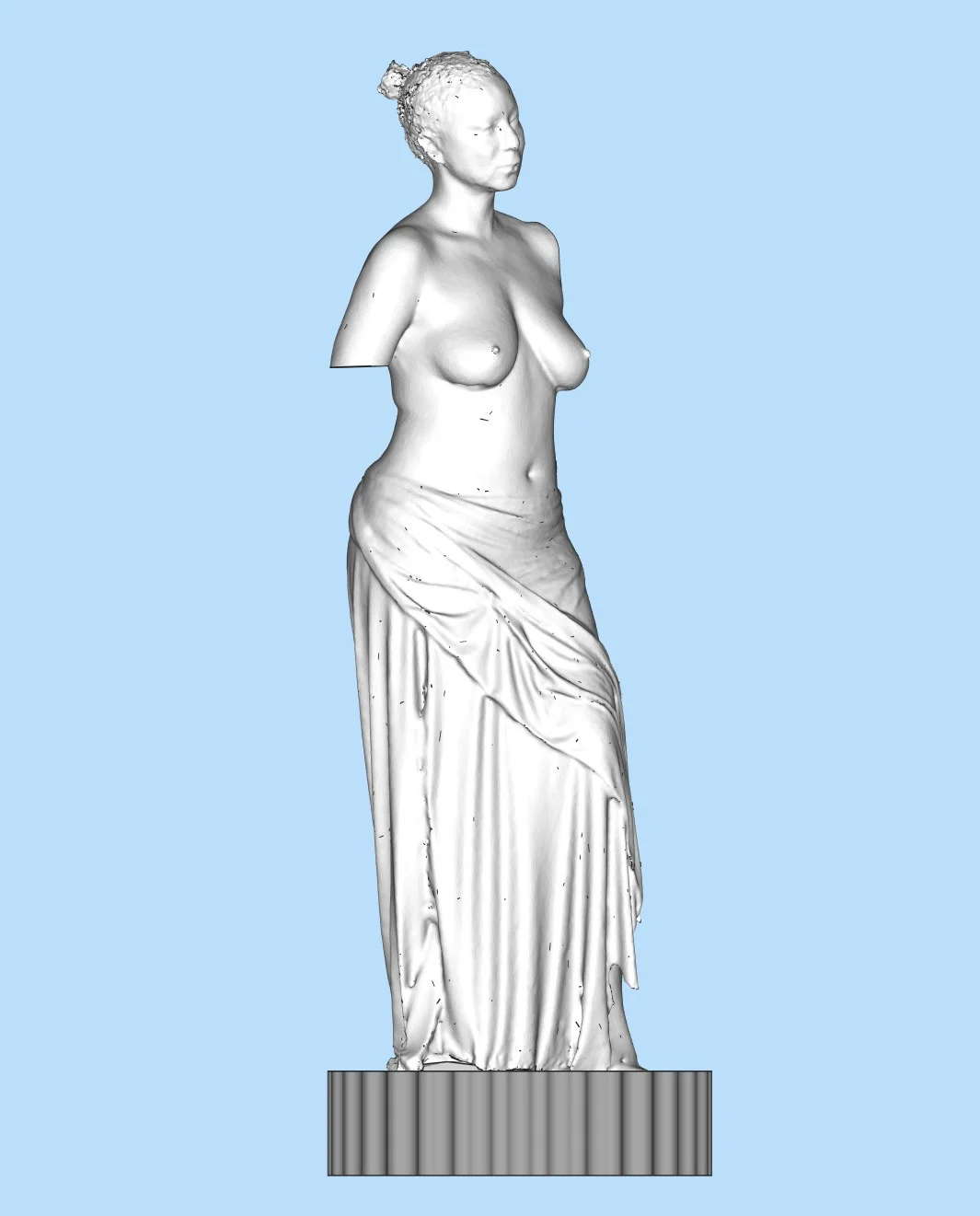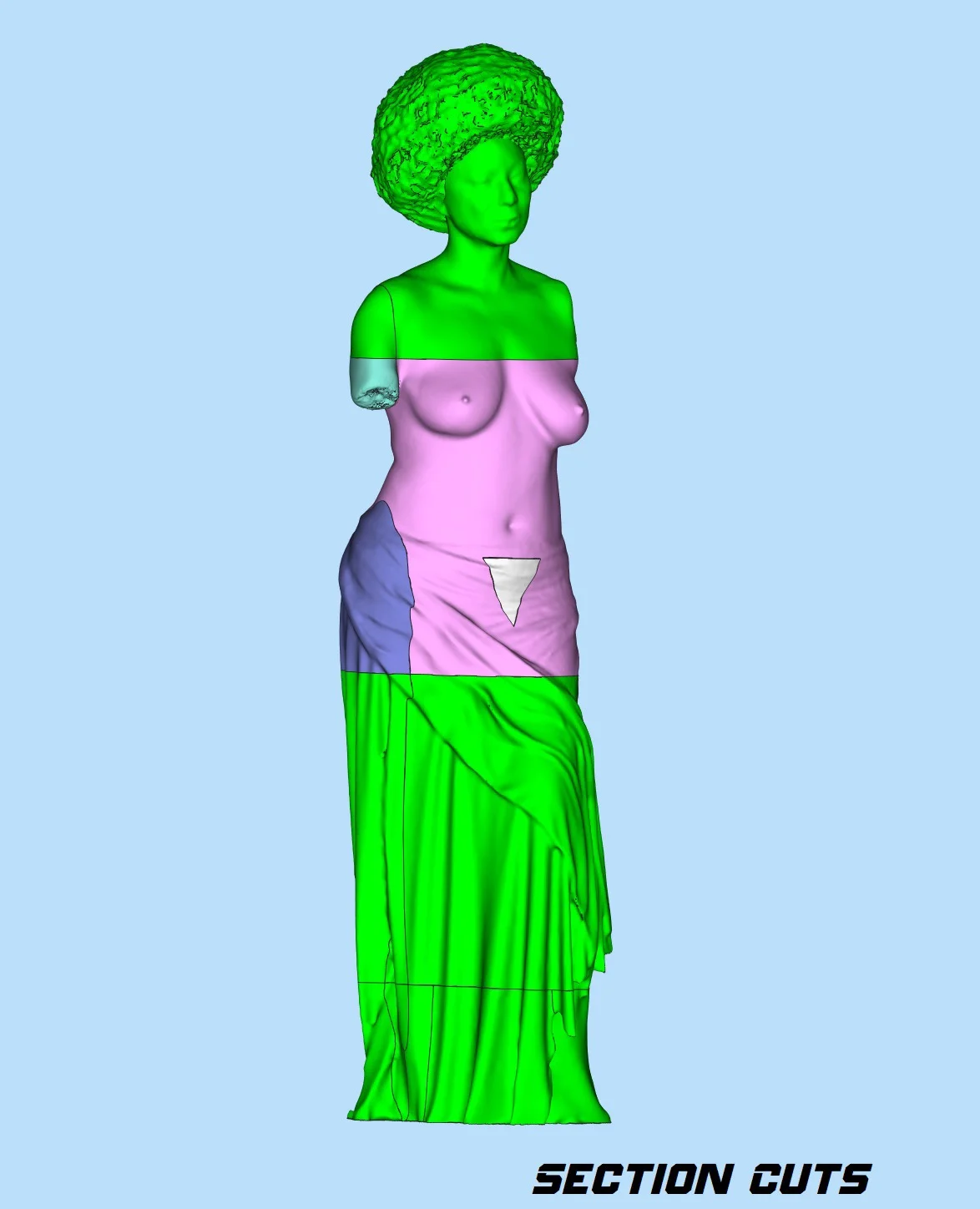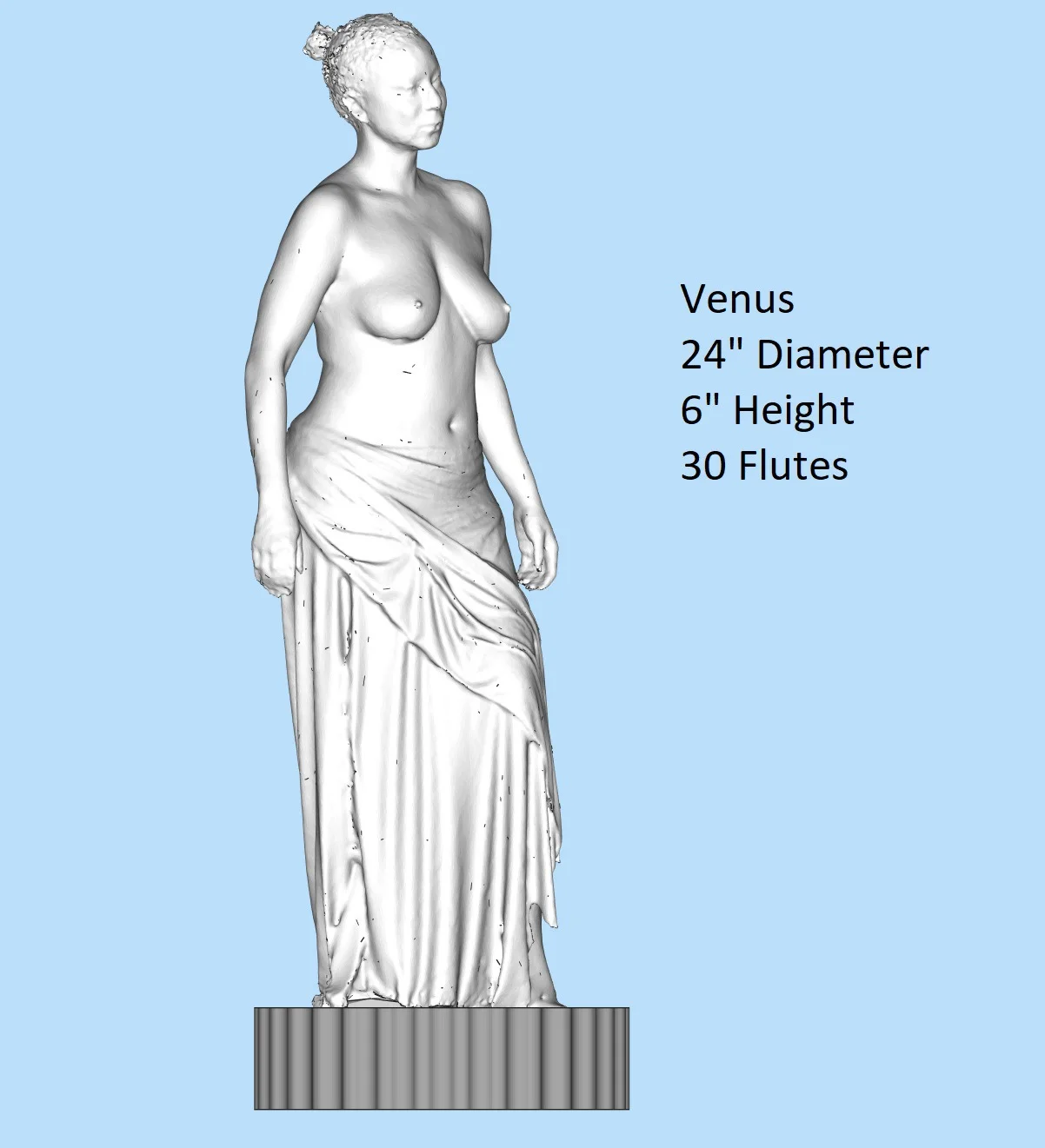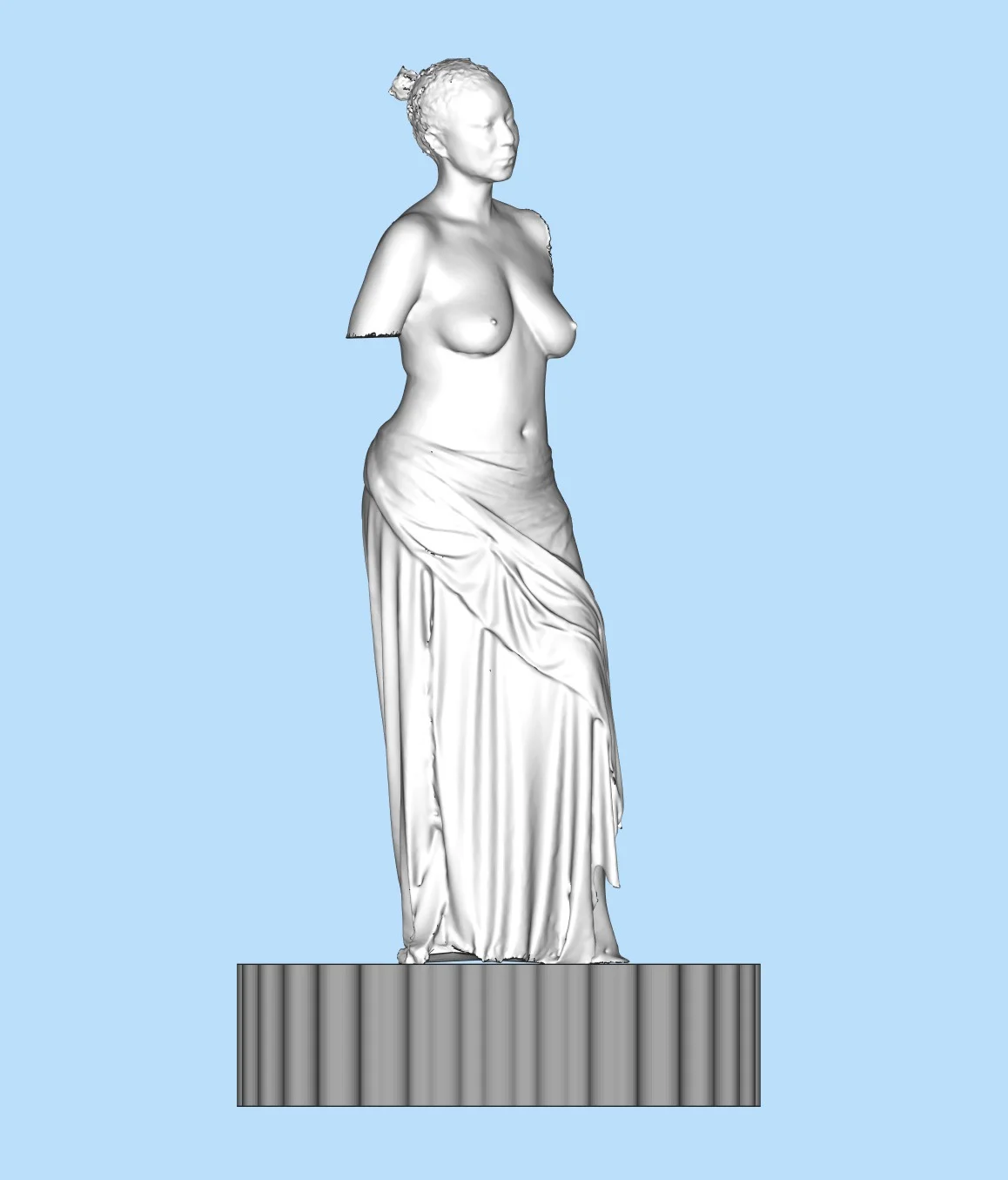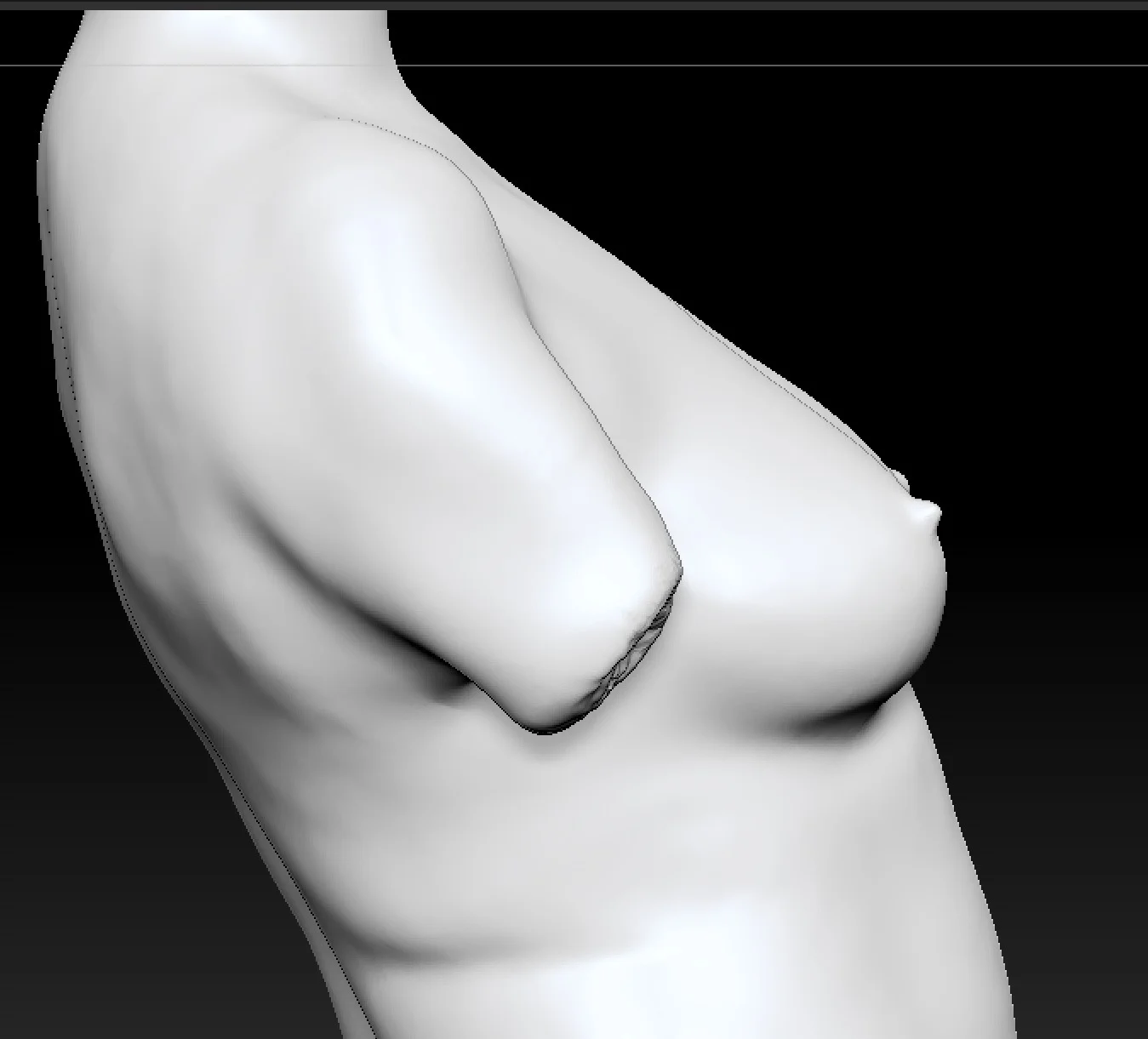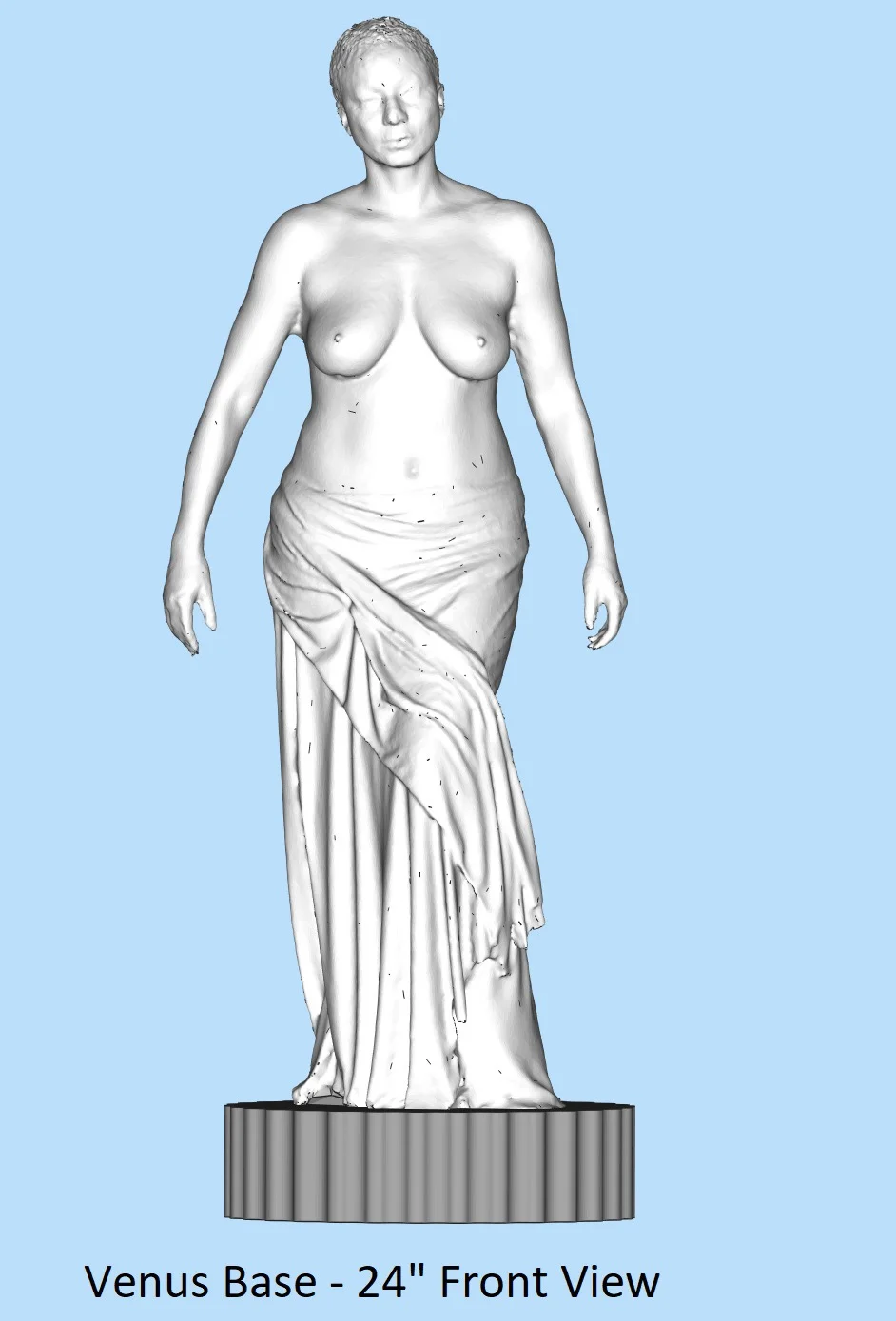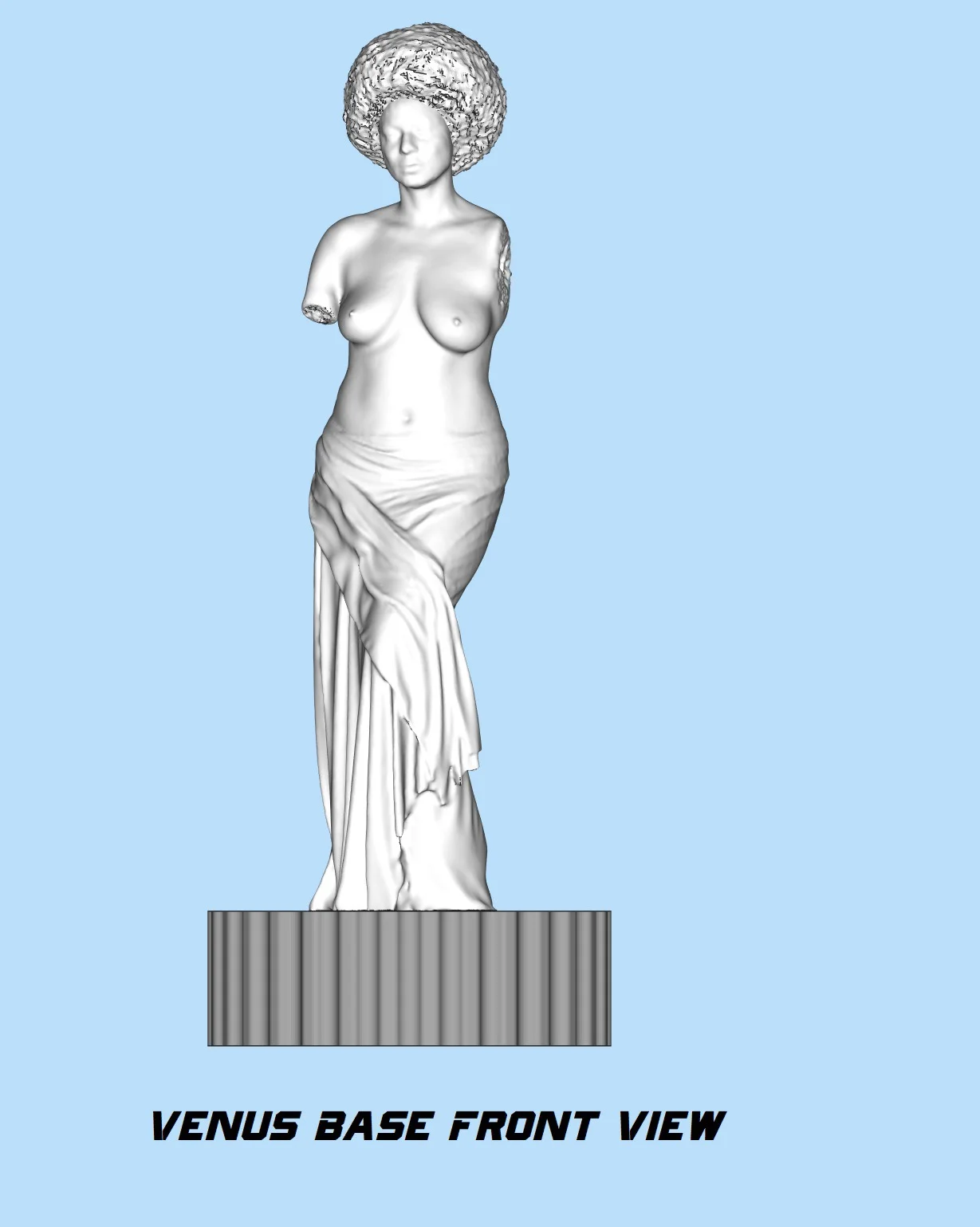Venus
“I am a Lavender Menace”
Goddess/Sculpture:
Venus the goddess of love, beauty, desire, sex, fertility, and victory.
The sculpture is a reference to Venus de Milo (Aphrodite 130-100BC) by Alexandros of Antioch. This homage considers the added complexities that women have fighting for equality around sexuality and identity even within the women’s movement itself, represented here by an updated armless Venus. Out of almost sheer will, Venus is shown holding a sign, a symbol of protest with the artist’s own printed hand as a fist raised in support of inclusive feminism. The front of the sign is taken from Sean Campbell’s 1999 flag created to represent lesbians and the back of the sign is the well-known double Venus symbol, which represents lesbian females. Venus will be holding fresh lavender and lavender oil will be used to engage the senses, she will also wear a removable lavender mask like a heroine.
Key Symbols:
The hand holding the sign wears a ring raising marriage equality, while light emanates from a triangle shape below her navel representing fertility to raise awareness around family rights and choice.
Purple/Violets/Lavender (color and flowers)—Purple has long been associated with the gay community, for varying reasons linked to royalty and considered feminine to represent gay men. The color and flower lavender have been used as a symbol in the lesbian community since 1927, though violets have links back to the Ancient Greek poet Sappho, also known as the “Tenth Muse”, an Archaic Greek poet from the island of Lesbos, known for her lyric poetry written to be sung while accompanied by a lyre.
Black Triangle-The black triangle was a badge used in Nazi concentration camps to mark prisoners regarded as "asocial", which included lesbians In the 1970s, the black triangle was first used as a symbol of pride and solidarity by lesbians in the United Kingdom; and its symbolic use was introduced in North America through the "women's peace camp movement". It has also been adopted in remembrance of lesbians who suffered and died at the hands of Nazis.
Labrys—a labrys is a double-headed axe. In Crete, they believed only goddesses carried the labrys. It was used as a scepter for ancient Amazonia goddesses, worshipped under various names, Gaea (mother of Earth), Rhea (mother of the Universe), Artemis (goddess of the hunt), and Demeter (goddess of harvest and fertility). The labrys became a popular symbol for lesbians and feminists due to a popular publication with focus on empowerment, “Labrys Magazine”.
Double Venus—this is a symbol (based on the astrological sign) which represents lesbian females.
Protest/Movement:
In 1969, Betty Friedan, the President of the National Organization of Women (NOW), negatively coined the phrase, the “Lavender Menace” with concerns that lesbian issues threatened the women’s movement . NOW distanced itself from lesbian causes.
In response, Rita Mae Brown organized a group of radical lesbian feminists. On May 1, 1970, at the Second Congress to Unite Women, the radical lesbian feminist group organized a zap (a humorous non-violent protest) to raise awareness around lesbian issues. The lights went down and when they came back up, there were women in the audience standing with one fist in the air and lavender colored silk-screened t-shirts that read: Lavender Menace. They passed out a manifesto “The Woman Identified Woman” written by Lois Hart, Cynthia Funk, Ellen Bedoz, Artemis March, and Barbara XX, known collectively as Radicalesbians (the listed author). Radical lesbian feminists reclaimed “Lavender Menace” and broke away from NOW, prompting a revolution.




